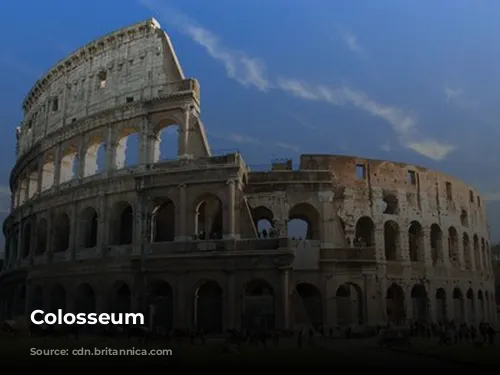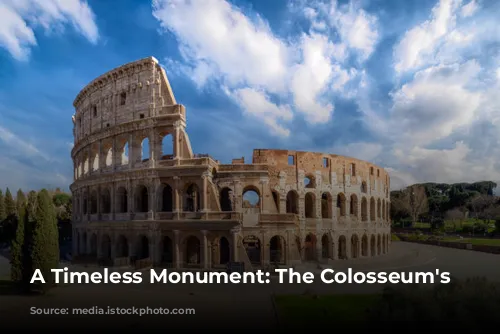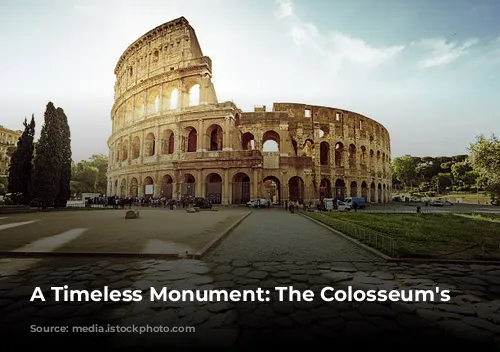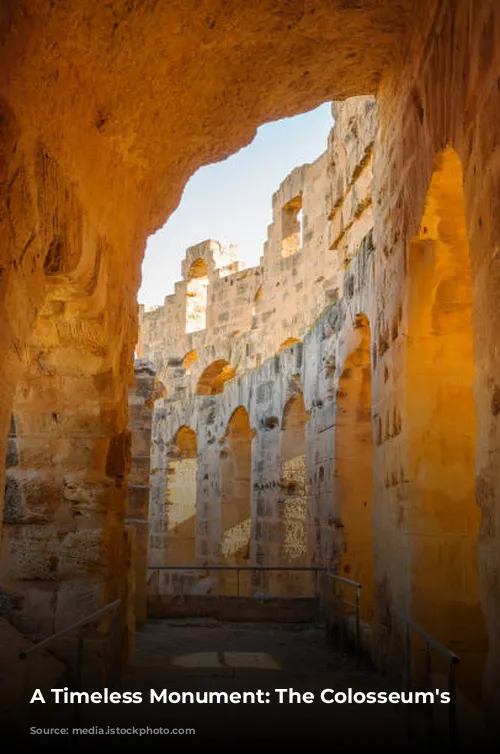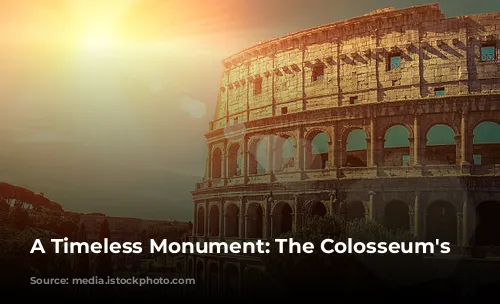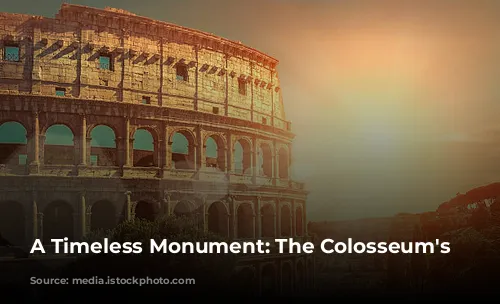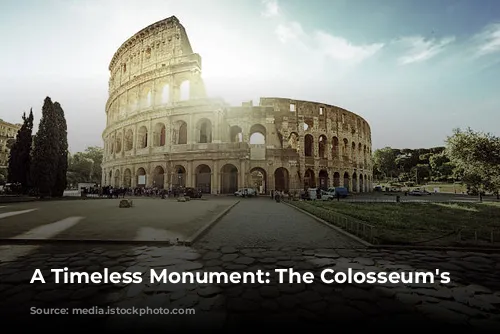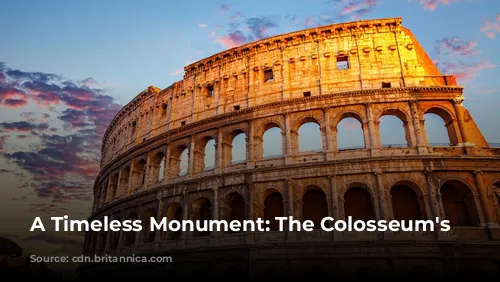The Colosseum stands as a testament to the architectural brilliance and engineering prowess of ancient Rome. This iconic structure is one of the few remnants of the Roman Empire that remains mostly intact. Today, it is a major tourist attraction, drawing millions of visitors every year and contributing significantly to Italy’s tourism revenue. In 2018 alone, the Colosseum, along with the Roman Forum and Palatine Hill, generated a whopping $63.3 million (€53.8 million), making it Italy’s top tourist attraction.
The Colosseum‘s history is a captivating journey through time. After the fall of the Western Roman Empire, the structure faced a period of significant neglect. In the 12th century, the Frangipane and Annibaldi families converted the arena into their fortress. Then, in the late 15th century, Pope Alexander VI authorized the use of the Colosseum as a quarry. This period of misuse and neglect spanned over a thousand years. Thankfully, in the 1990s, state-funded restoration efforts began, marking a turning point in the Colosseum’s journey towards preservation.
The Colosseum’s Origins and Construction
The Colosseum was built as a grand gesture of revitalization for Rome, a project undertaken after the turbulent “Year of the Four Emperors” in 69 CE. Like other amphitheaters, the emperor Vespasian envisioned the Colosseum as a vibrant center for entertainment. It was intended to host gladiatorial fights, animal hunts, and even mock naval battles, providing the Roman populace with thrilling spectacles.
Construction of the Colosseum commenced under Vespasian’s rule, between 70 and 72 CE. Its completion was marked by a grand dedication ceremony in 80 CE, orchestrated by Vespasian’s son and successor, Titus. The fourth story of the Colosseum was added by the emperor Domitian in 82 CE. It is worth noting that the Colosseum was financed by the spoils of war, the plunder from Titus’s conquest of Jerusalem in 70 CE, and was built using enslaved Jews from Judaea.
A Majestic Amphitheater: Design and Function
The Colosseum, also known as the Flavian Amphitheater, is a remarkable structure, built by the Flavian emperors during the Roman Empire. This elliptical masterpiece, composed of stone, concrete, and tuff, stands tall, reaching four stories at its highest point. It is a colossal structure, measuring 620 by 513 feet (189 by 156 meters) and capable of accommodating up to 50,000 spectators. It was primarily known for its gladiatorial combat, a spectacle that captivated the Roman public.
The Colosseum was built just east of Palatine Hill, on the site of Nero’s Golden House. The artificial lake, the centerpiece of this opulent palace complex, was drained, making way for the Colosseum. This decision held both symbolic and practical significance. Vespasian, whose rise to power was far from lavish, chose to replace the tyrannical emperor’s private lake with a public amphitheater, capable of hosting thousands of Romans.
An Architectural Marvel: Construction and Design
The Colosseum, unlike earlier amphitheaters often built into hillsides for support, stands as a freestanding structure of stone and concrete. It employs a complex system of barrel vaults and groin vaults, making it a marvel of Roman engineering. The structure measures an impressive 620 by 513 feet (189 by 156 meters).
The Colosseum boasts a series of arcades, with engaged columns in the Doric, Ionic, and Corinthian orders, encircling the three main stories. This ascending arrangement of columns laid the foundation for the Renaissance codification known as the assemblage of orders. The main structural framework and facade are crafted from travertine, while volcanic tufa forms the secondary walls. The inner bowl and arcade vaults are constructed from concrete.
The Colosseum: A Stage for Spectacle
The amphitheater could accommodate around 50,000 spectators, who were shielded from the sun by a massive retractable awning known as a velarium. Supporting masts extended from corbels built into the Colosseum’s top story, or attic, and hundreds of Roman sailors were responsible for manipulating the rigging that extended and retracted the velarium.
The Colosseum was a stage for a multitude of spectacles, from intense hand-to-hand combats between gladiators to contests between men and animals, and even grand mock naval engagements. However, the connection between the arena and the martyrdom of early Christians remains uncertain.
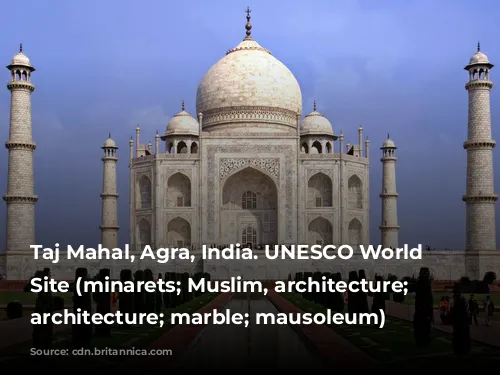
The Colosseum’s Transformation: From Glory to Neglect
In medieval times, the Colosseum was repurposed, initially serving as a church, and later as a fortress for prominent Roman families like the Frangipane and Annibaldi. Sadly, the Colosseum suffered damage from lightning, earthquakes, vandalism, and pollution. The once-glorious marble seats and decorative materials were stripped away, as the site was treated as little more than a quarry for over a thousand years.
Fortunately, in the 19th century, the preservation of the Colosseum gained momentum, spearheaded by Pius VIII. The 1990s saw a significant restoration project, breathing new life into the ancient structure. Today, the Colosseum stands as one of Rome’s most treasured tourist attractions, welcoming nearly seven million visitors annually. Regularly held exhibitions showcasing ancient Roman culture further enhance the visitor experience.
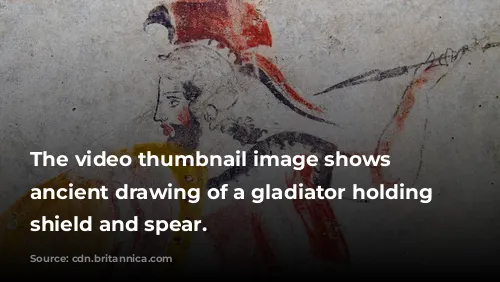
Conclusion: A Legacy of Power and Entertainment
The Colosseum, standing tall against the backdrop of time, remains a symbol of ancient Rome’s grandeur, a testament to its architectural prowess, and a reminder of the vibrant spectacle that once unfolded within its walls. It serves as a powerful link to a bygone era, captivating visitors with its history, architecture, and the echoes of a civilization that once ruled the world.
